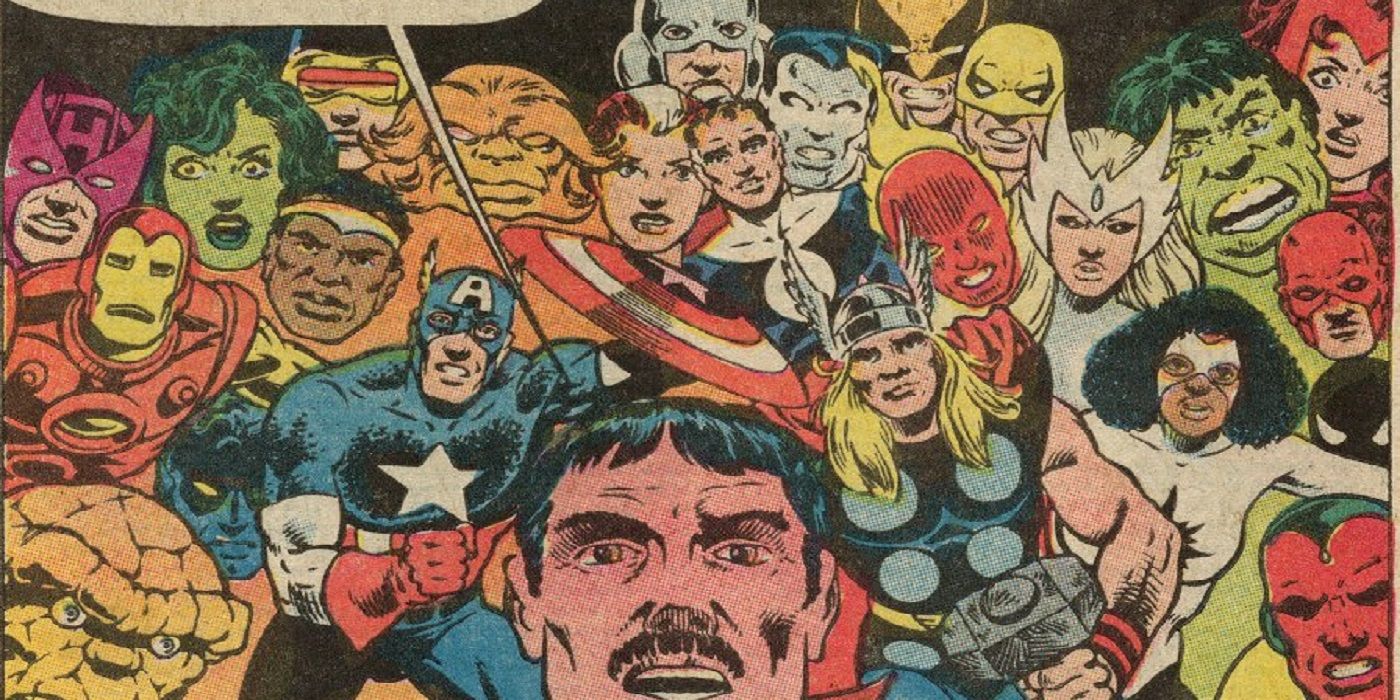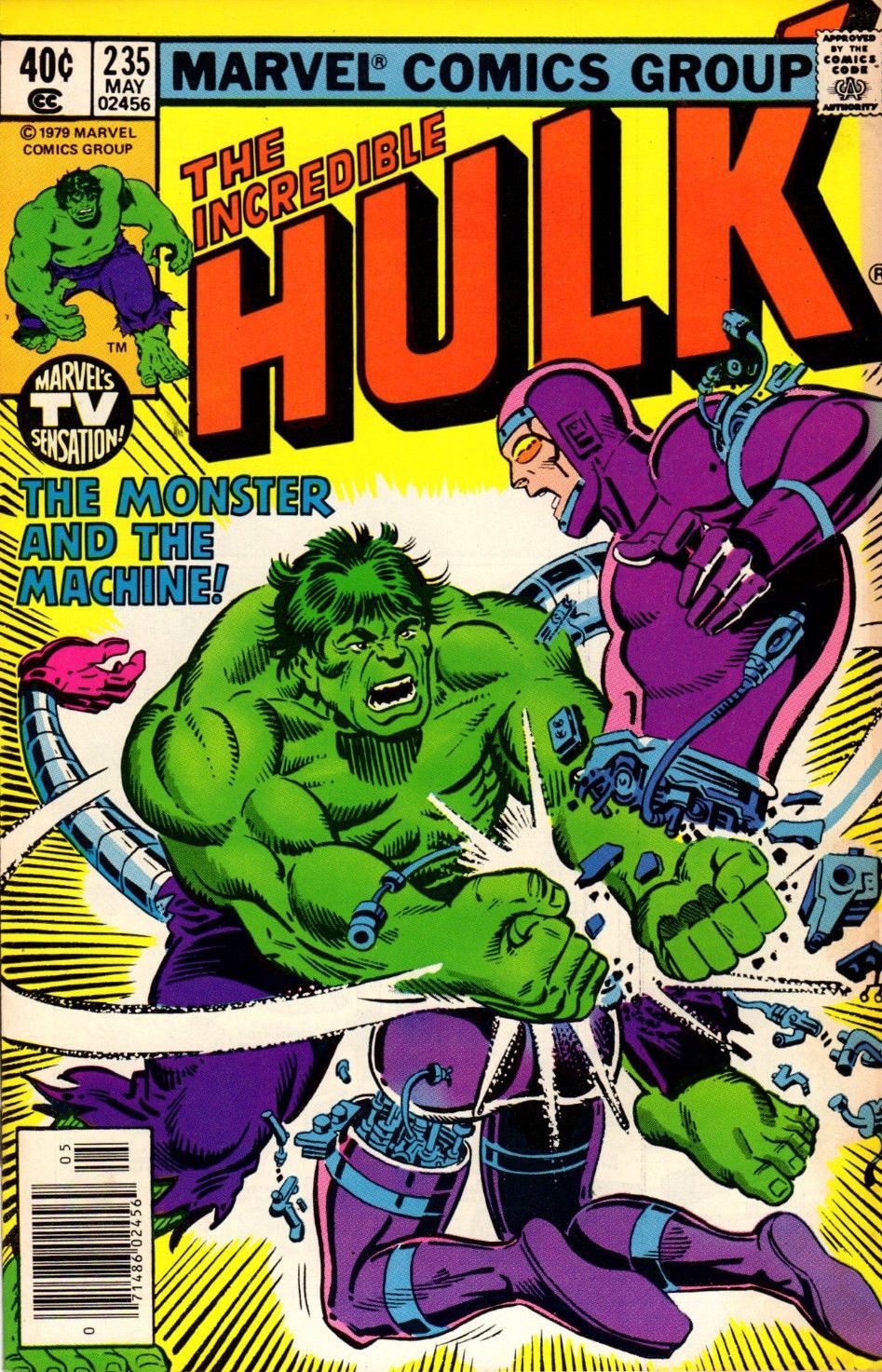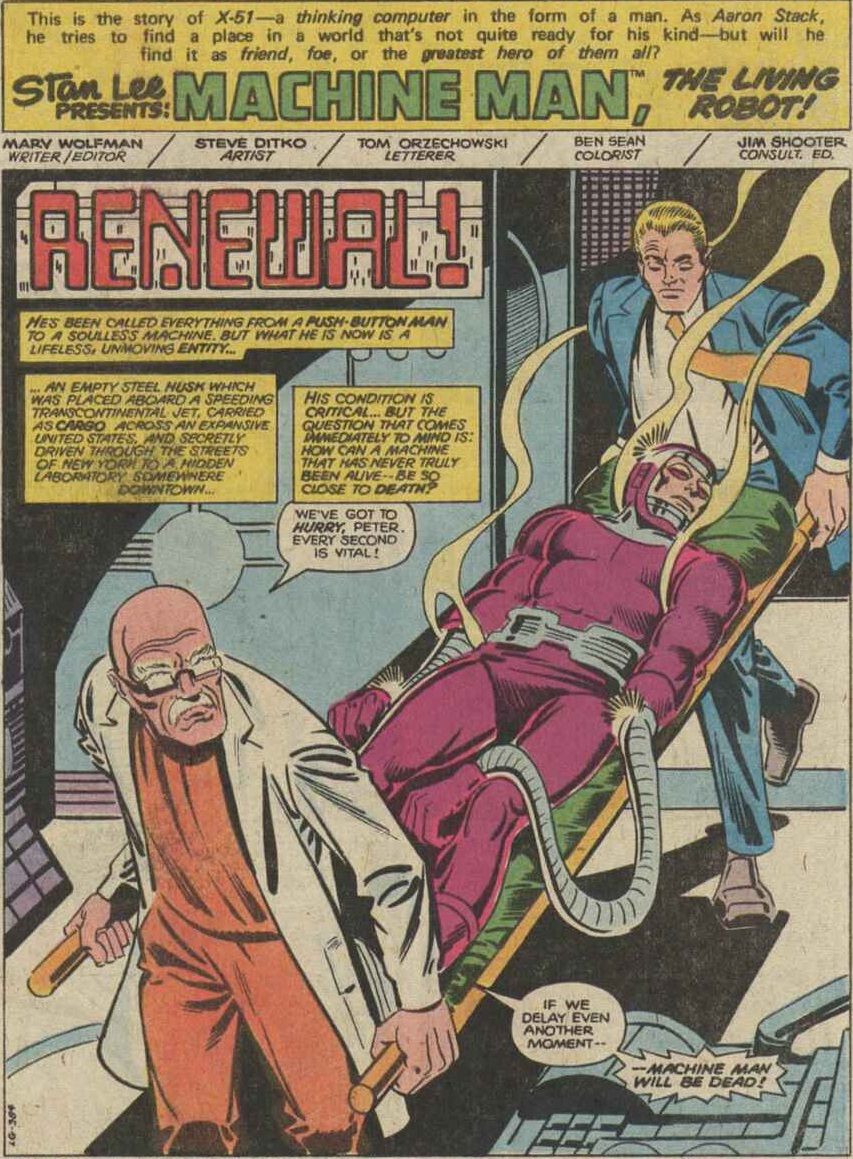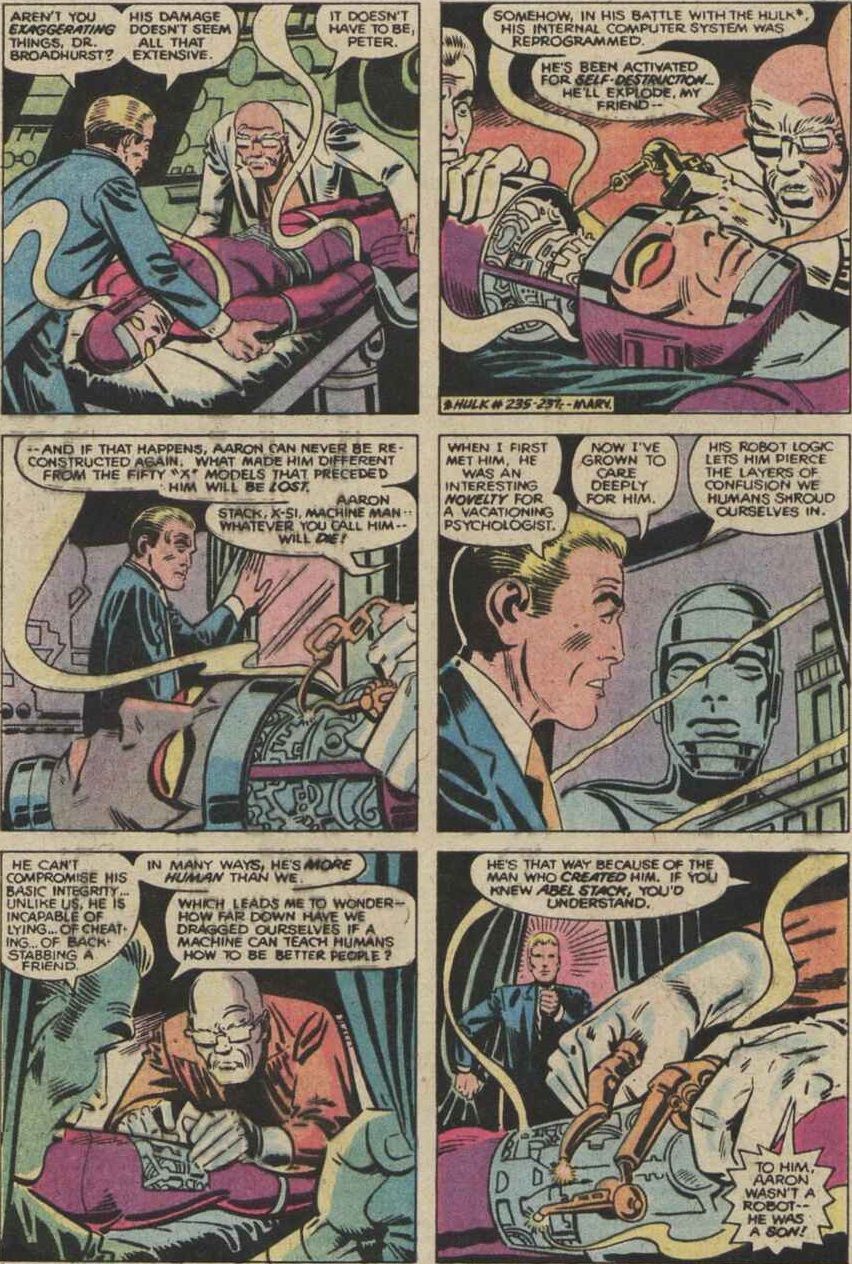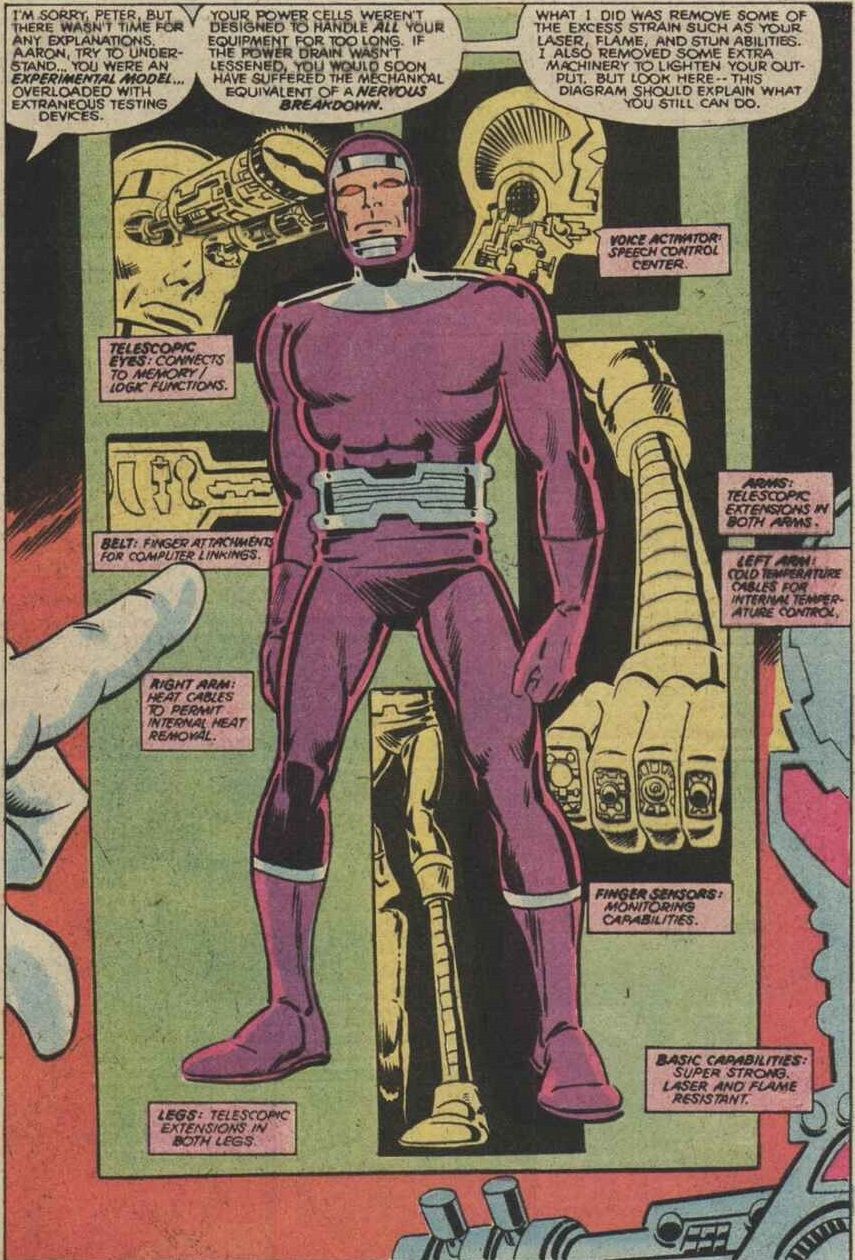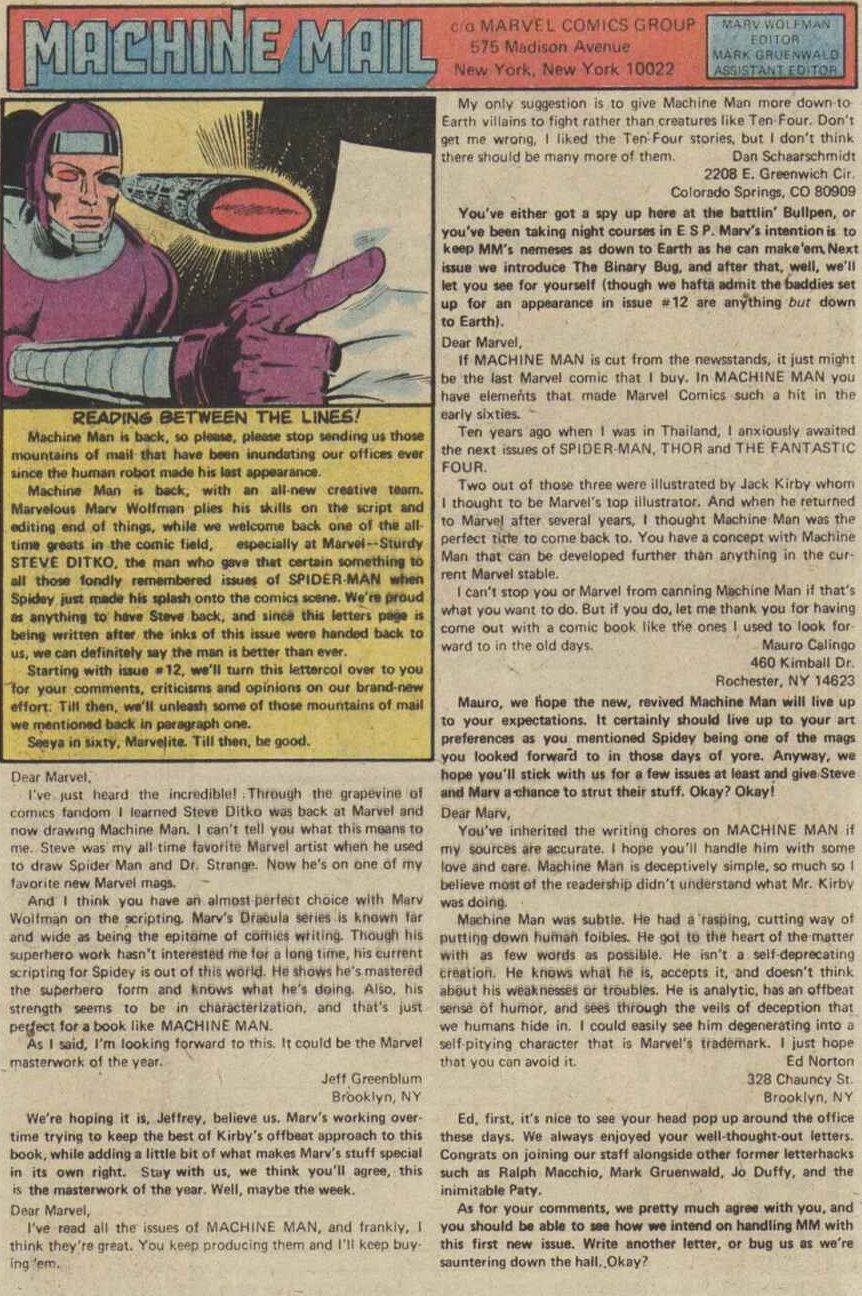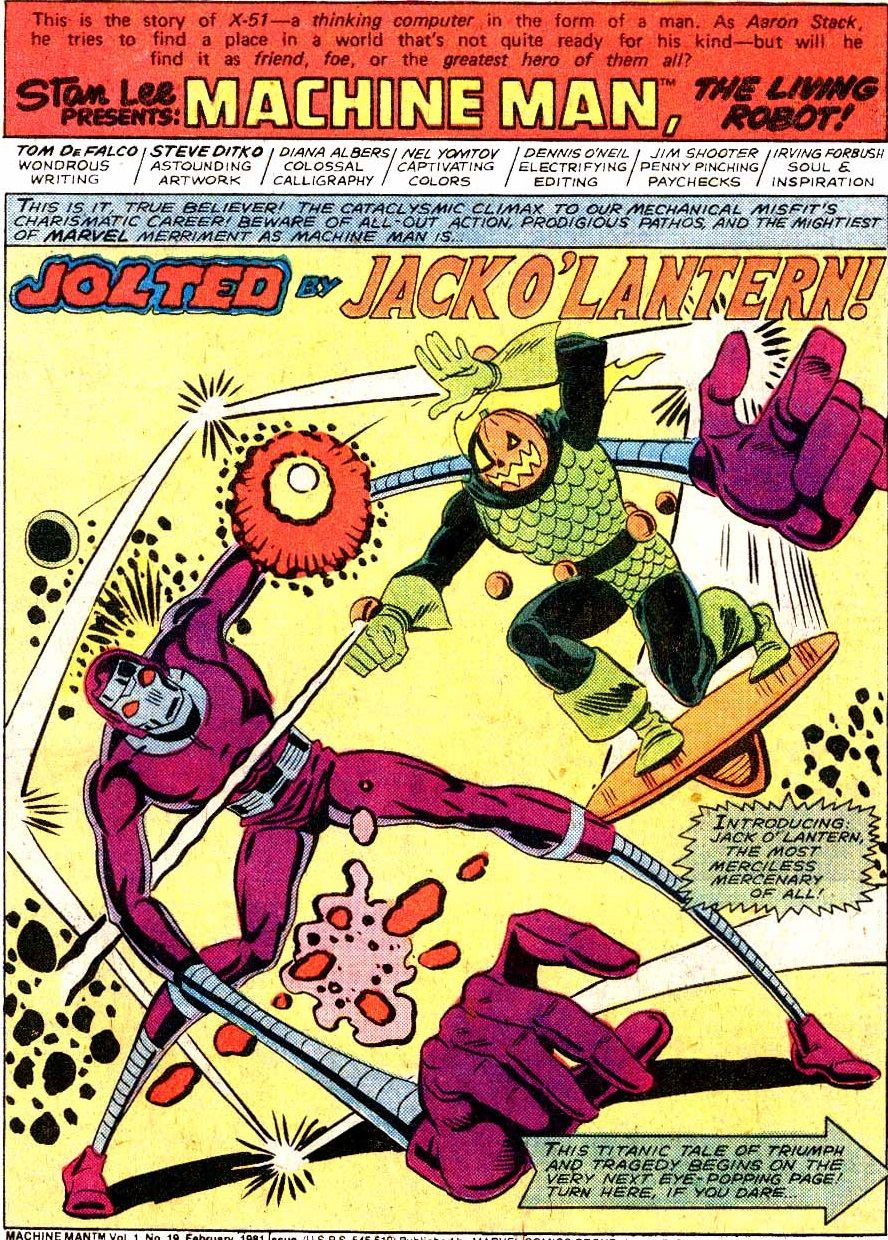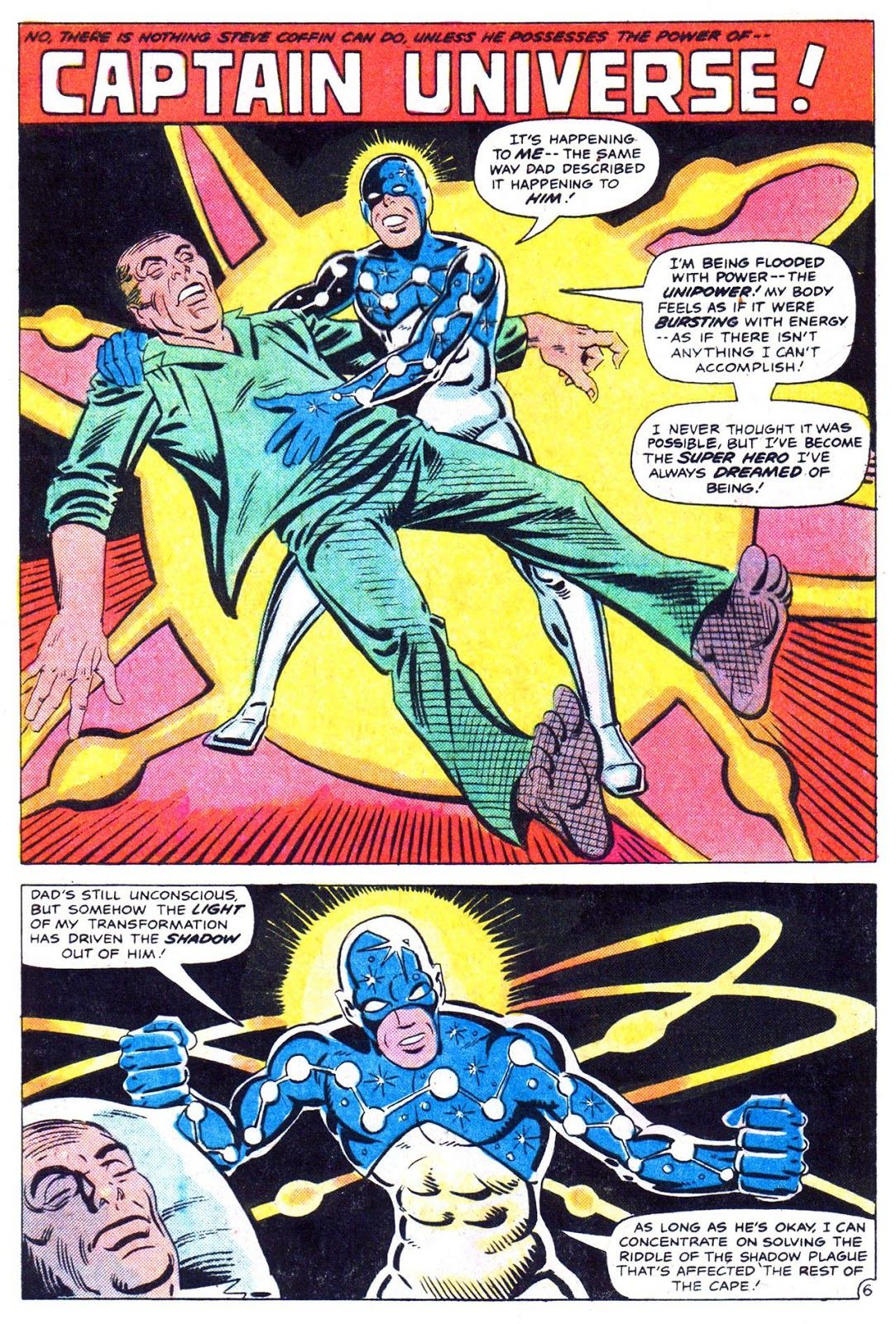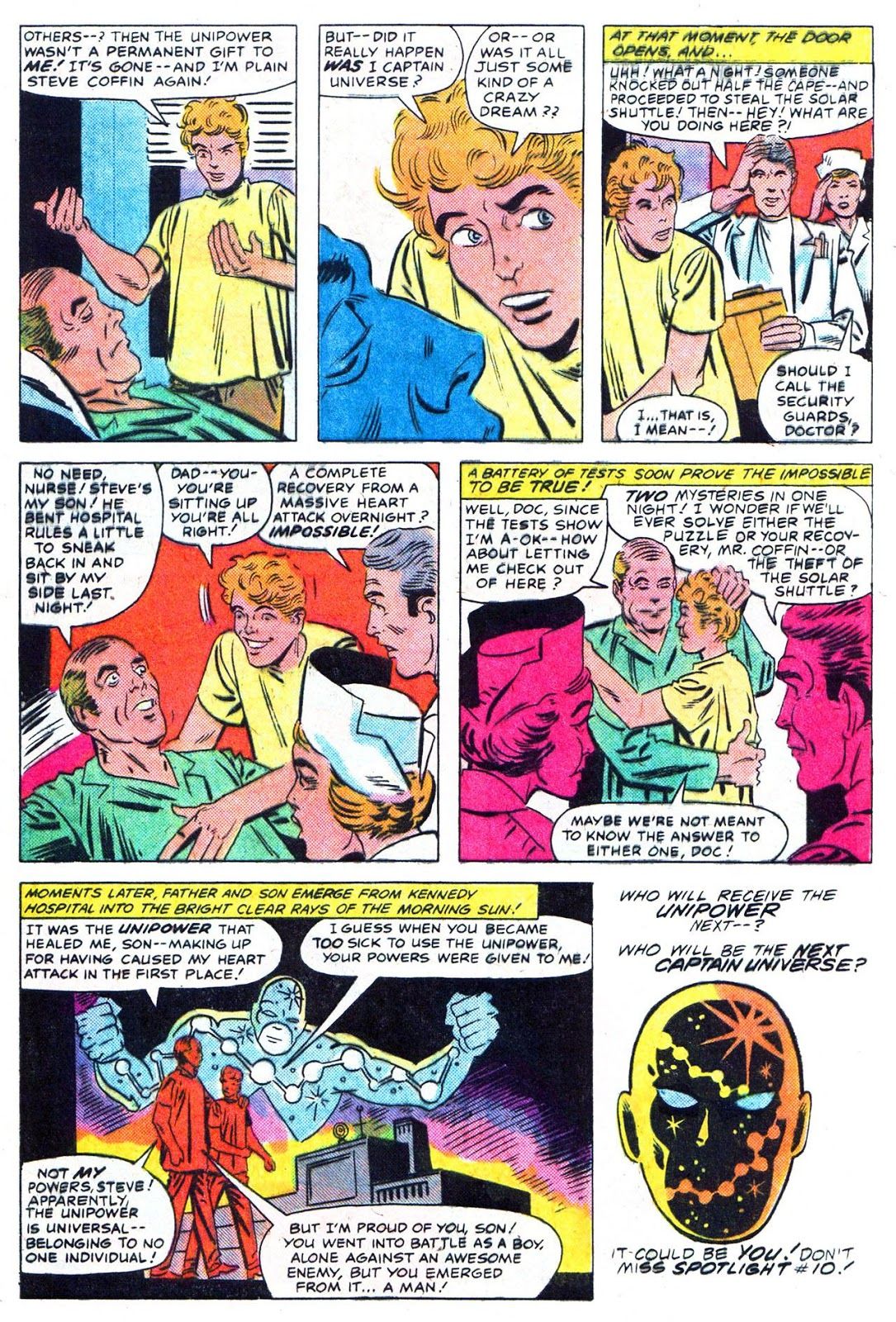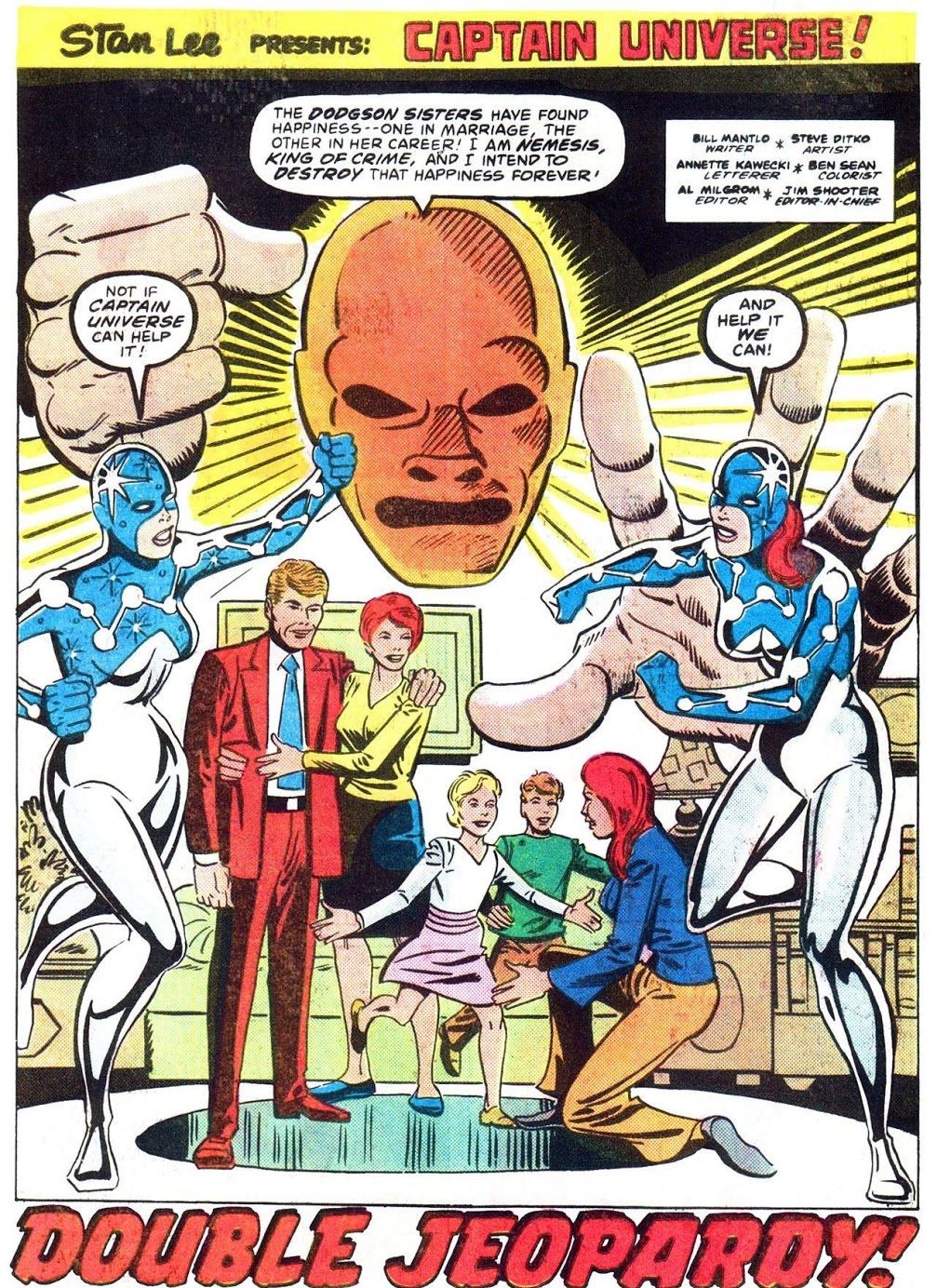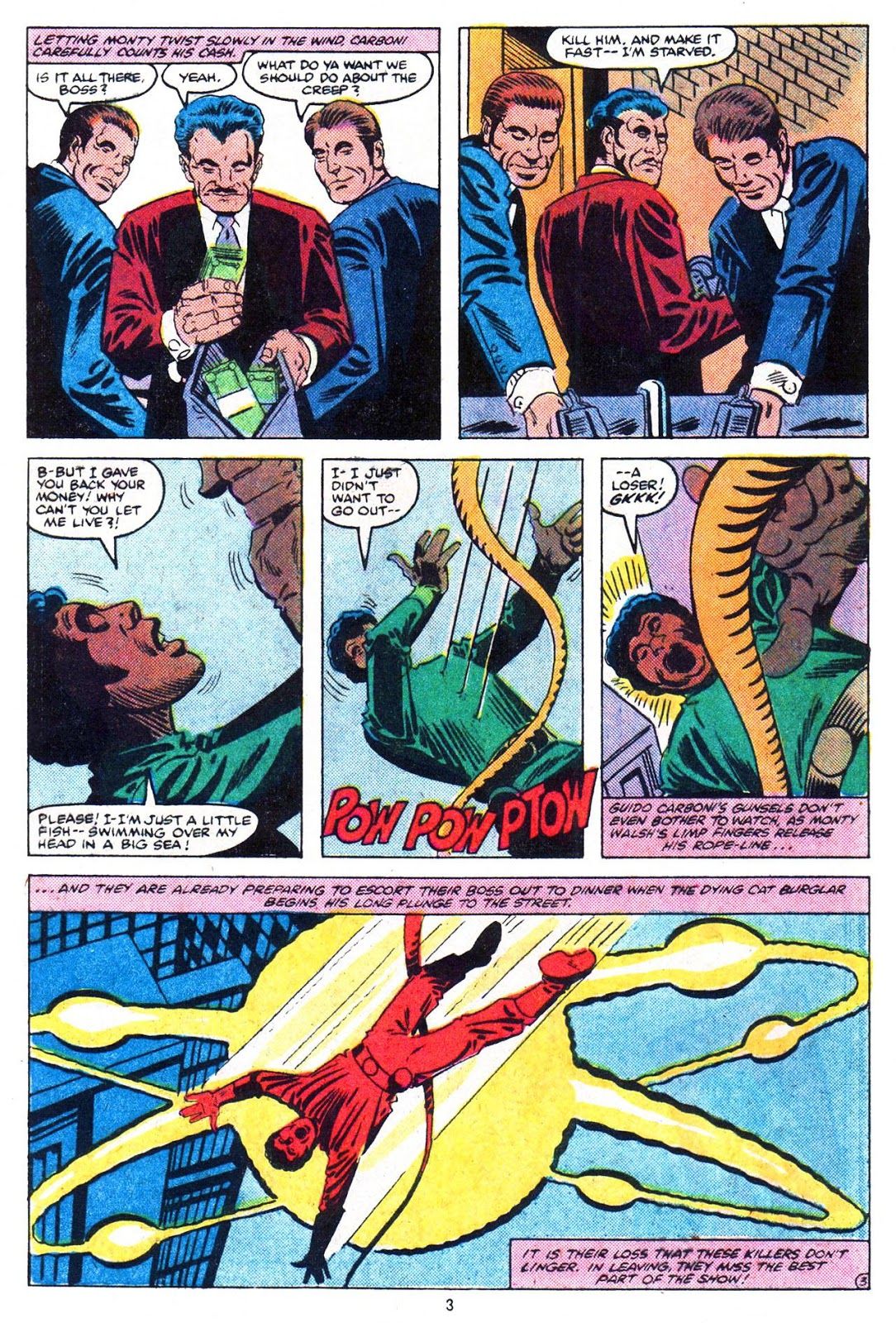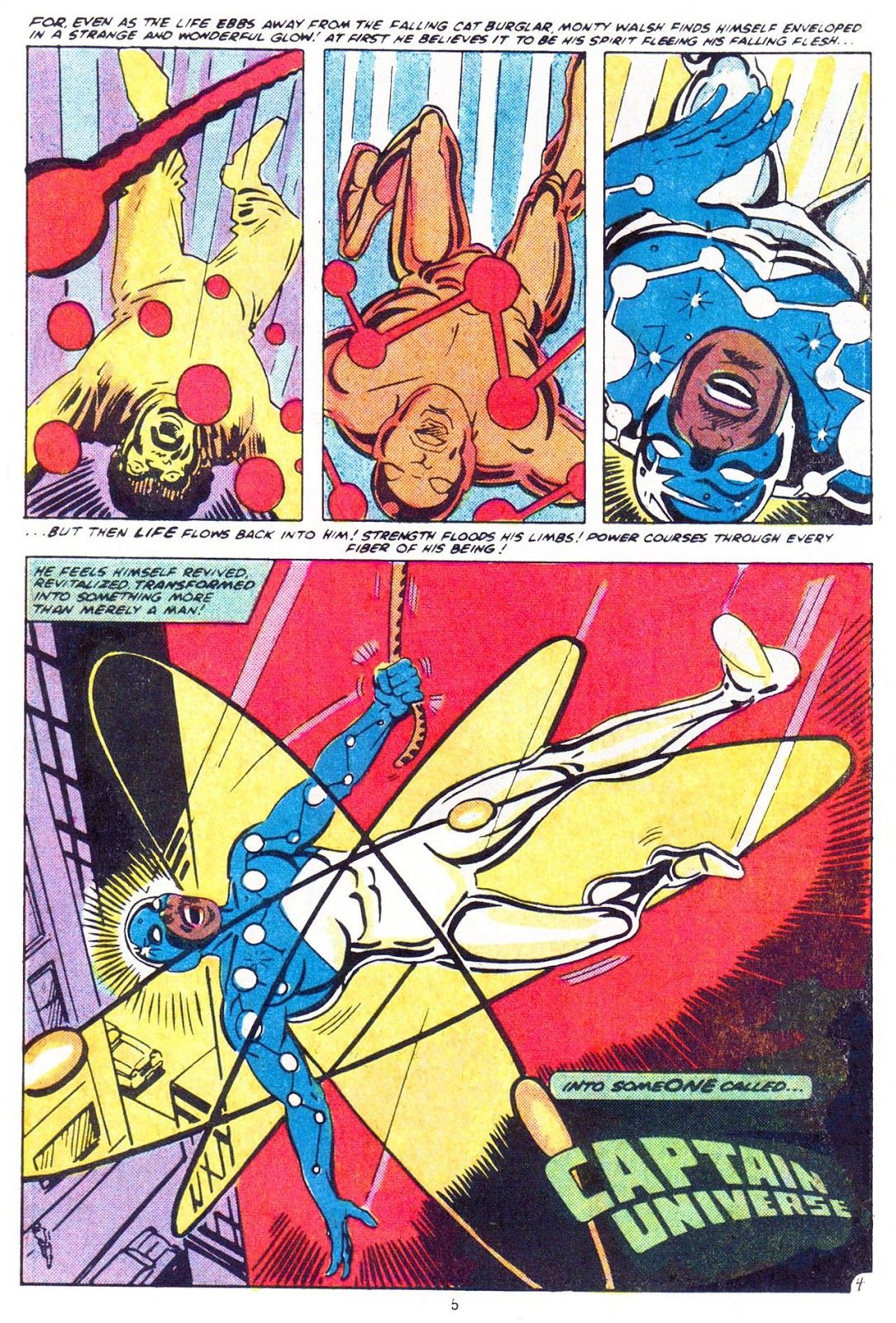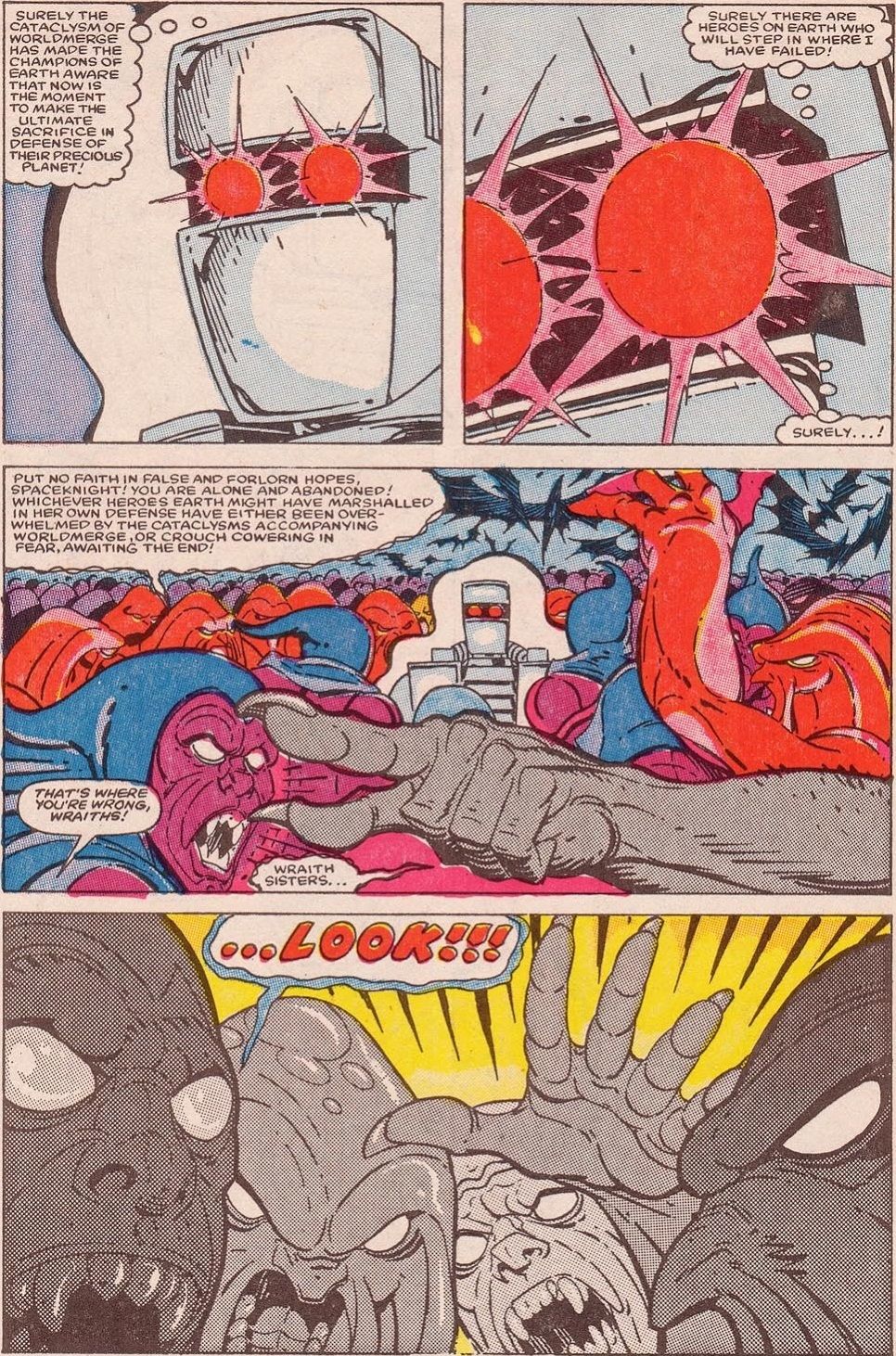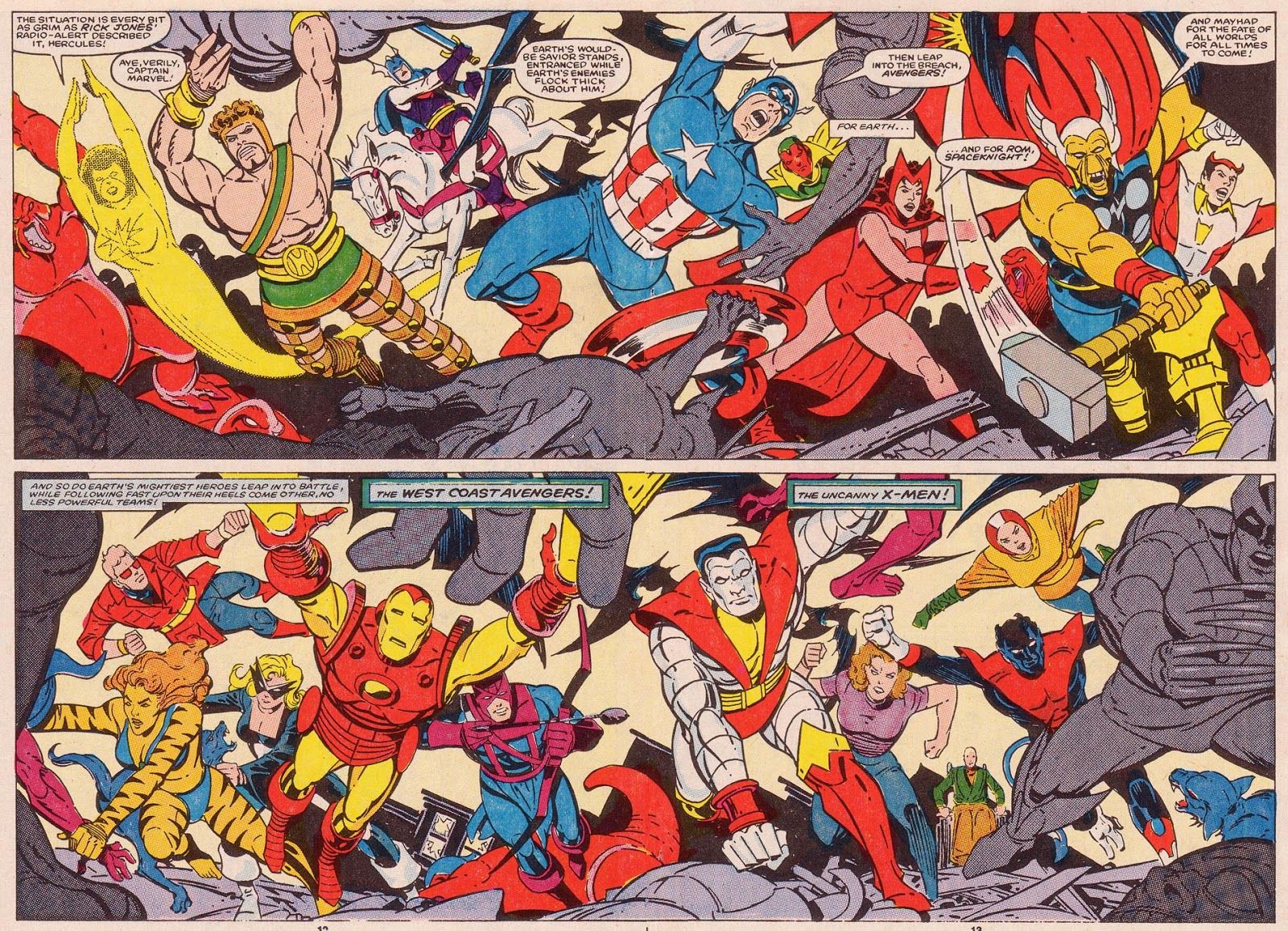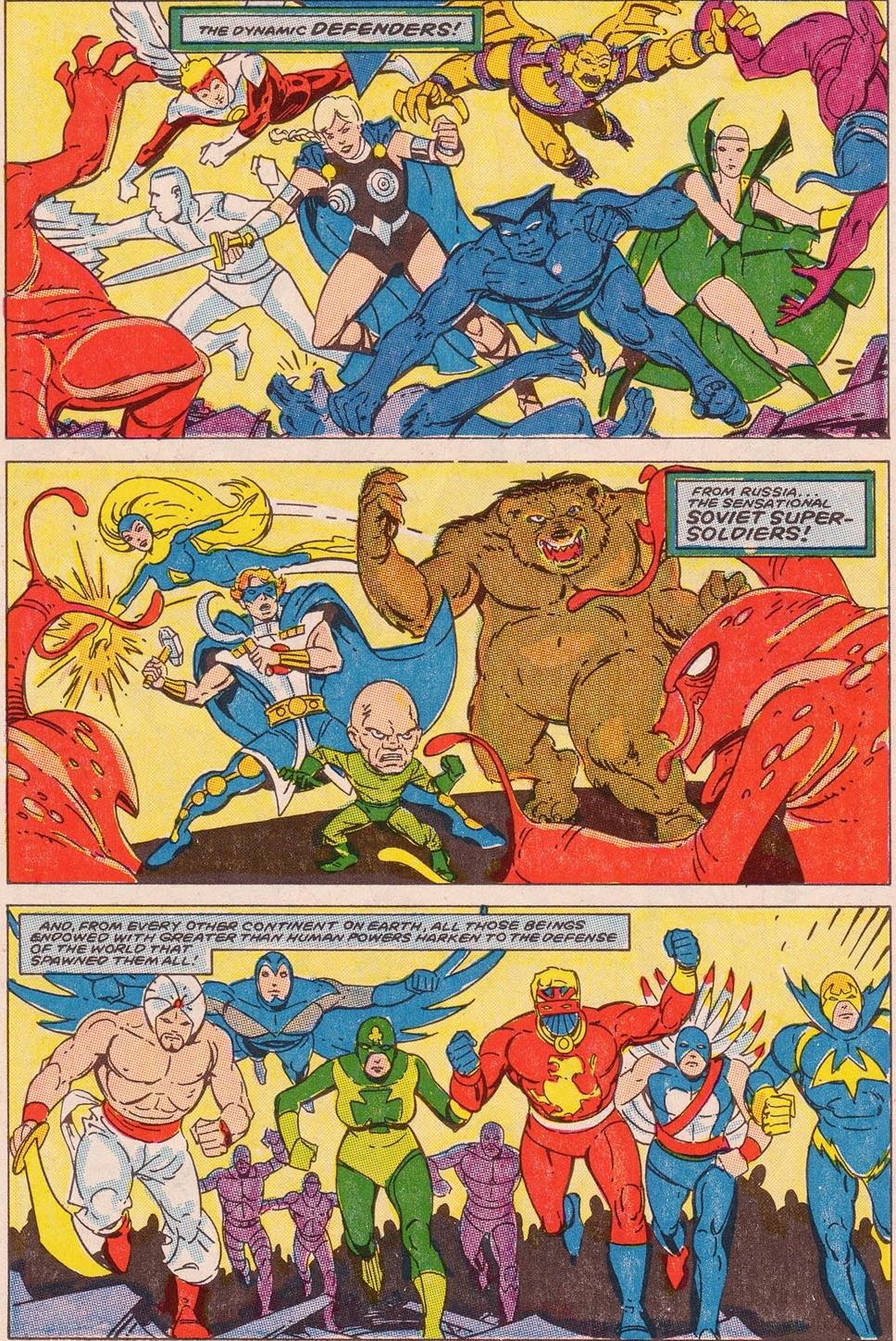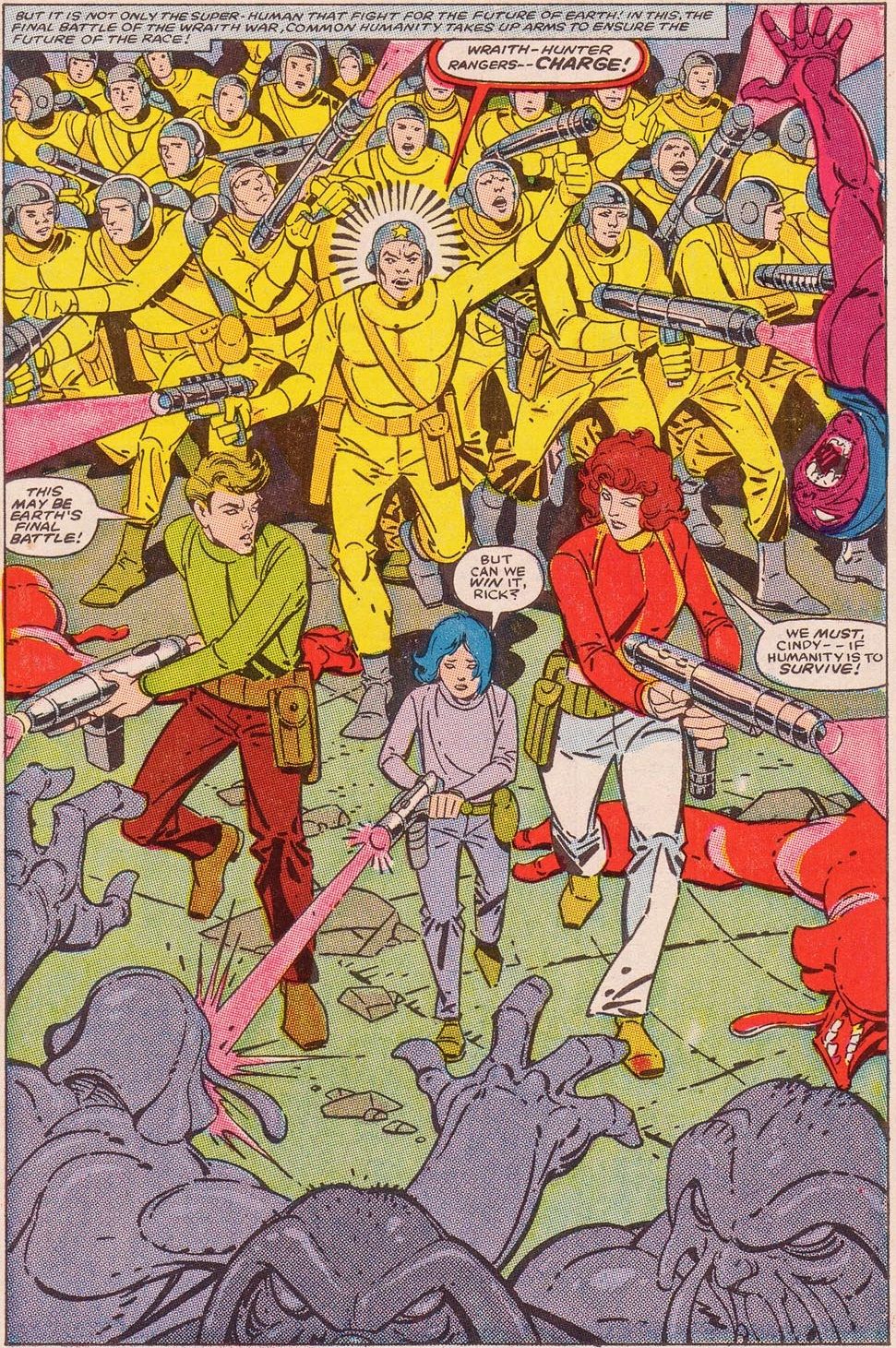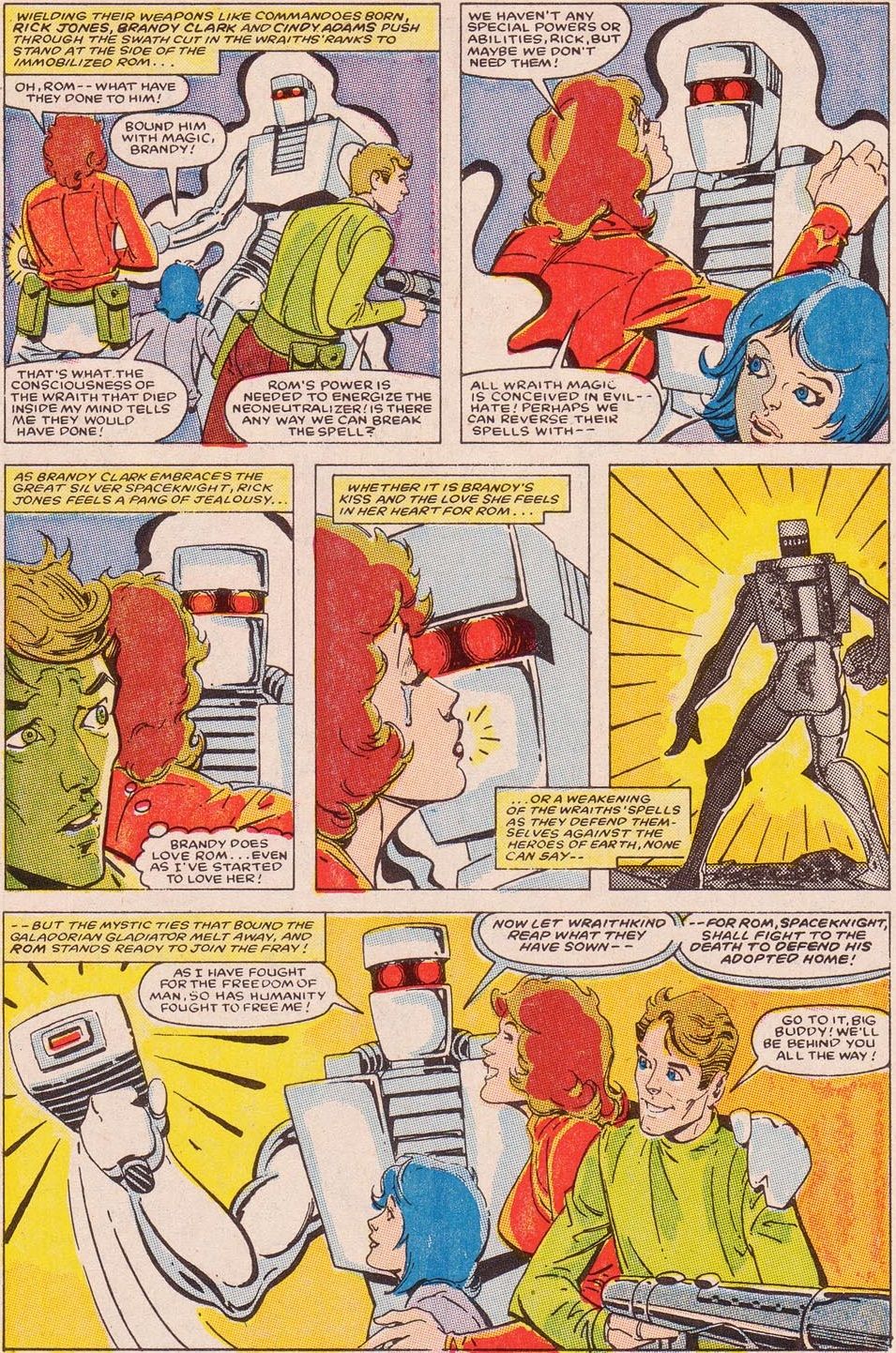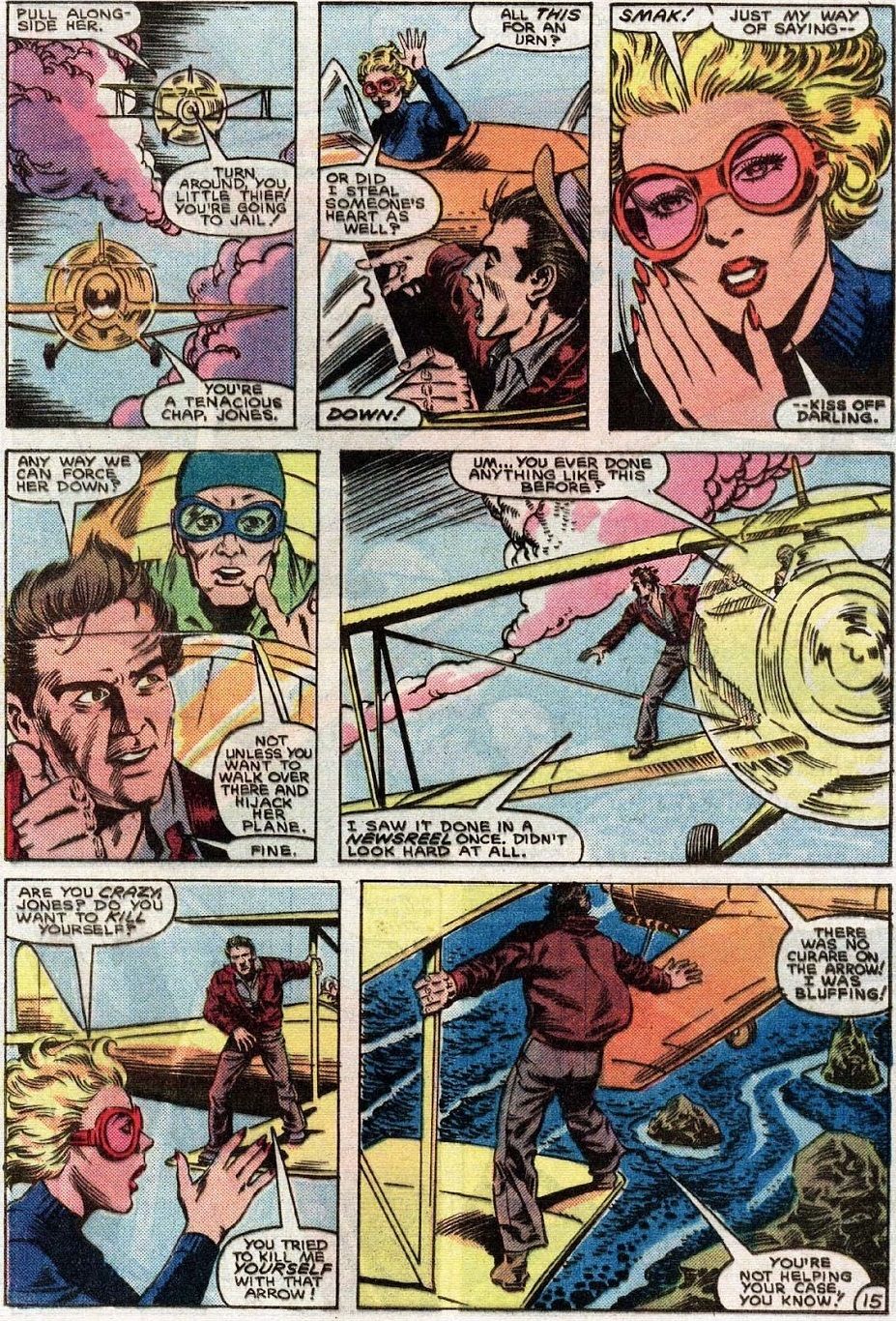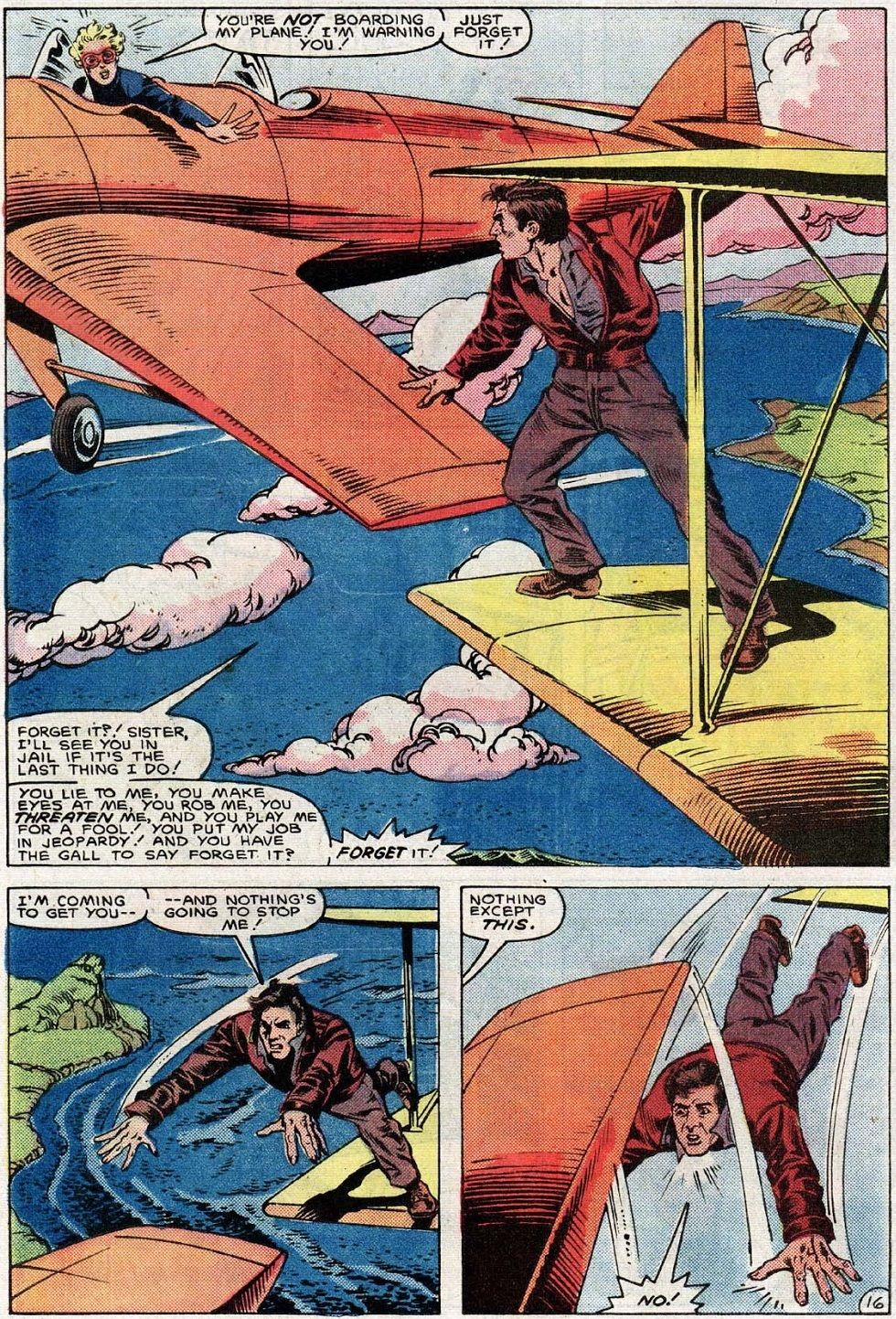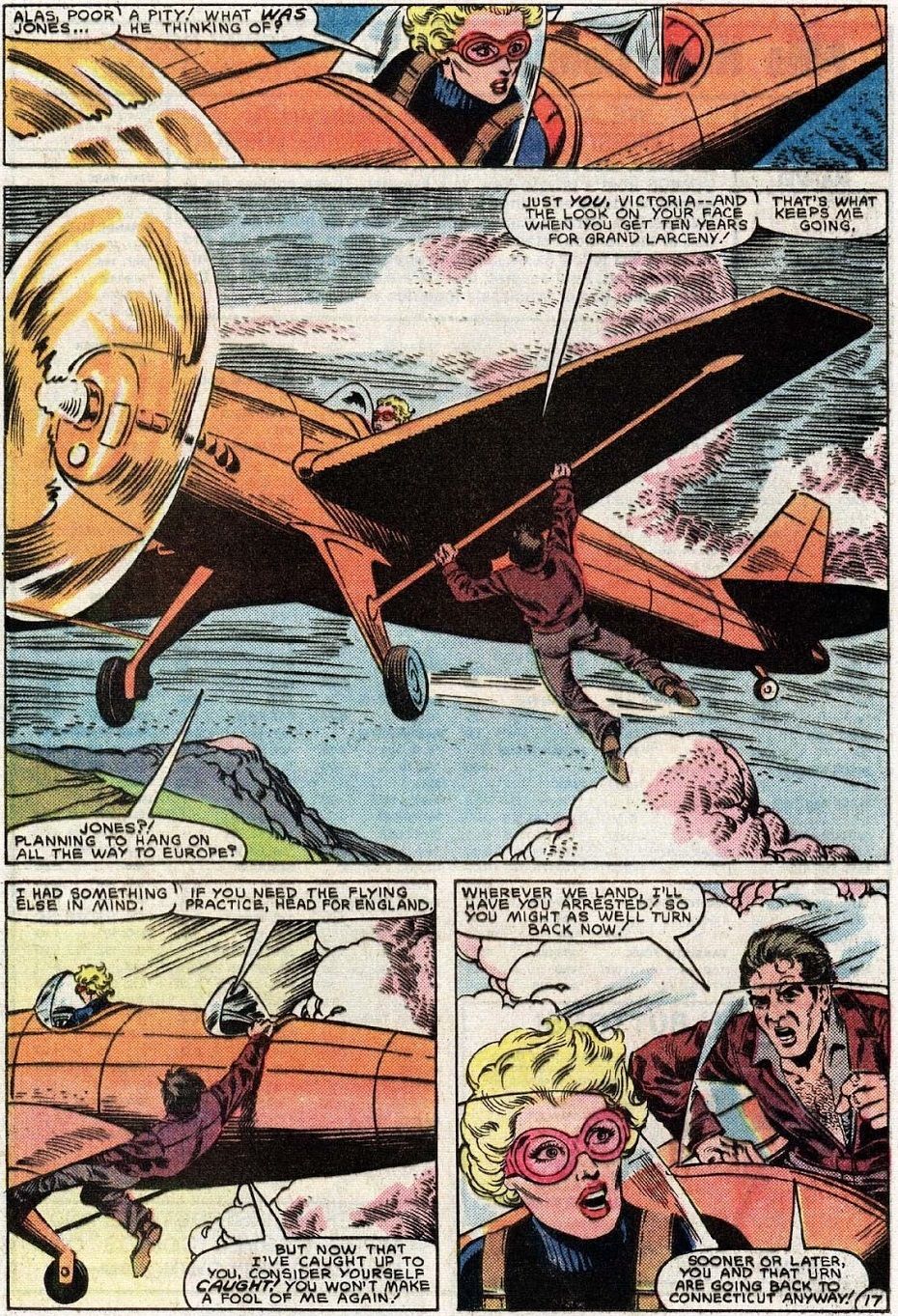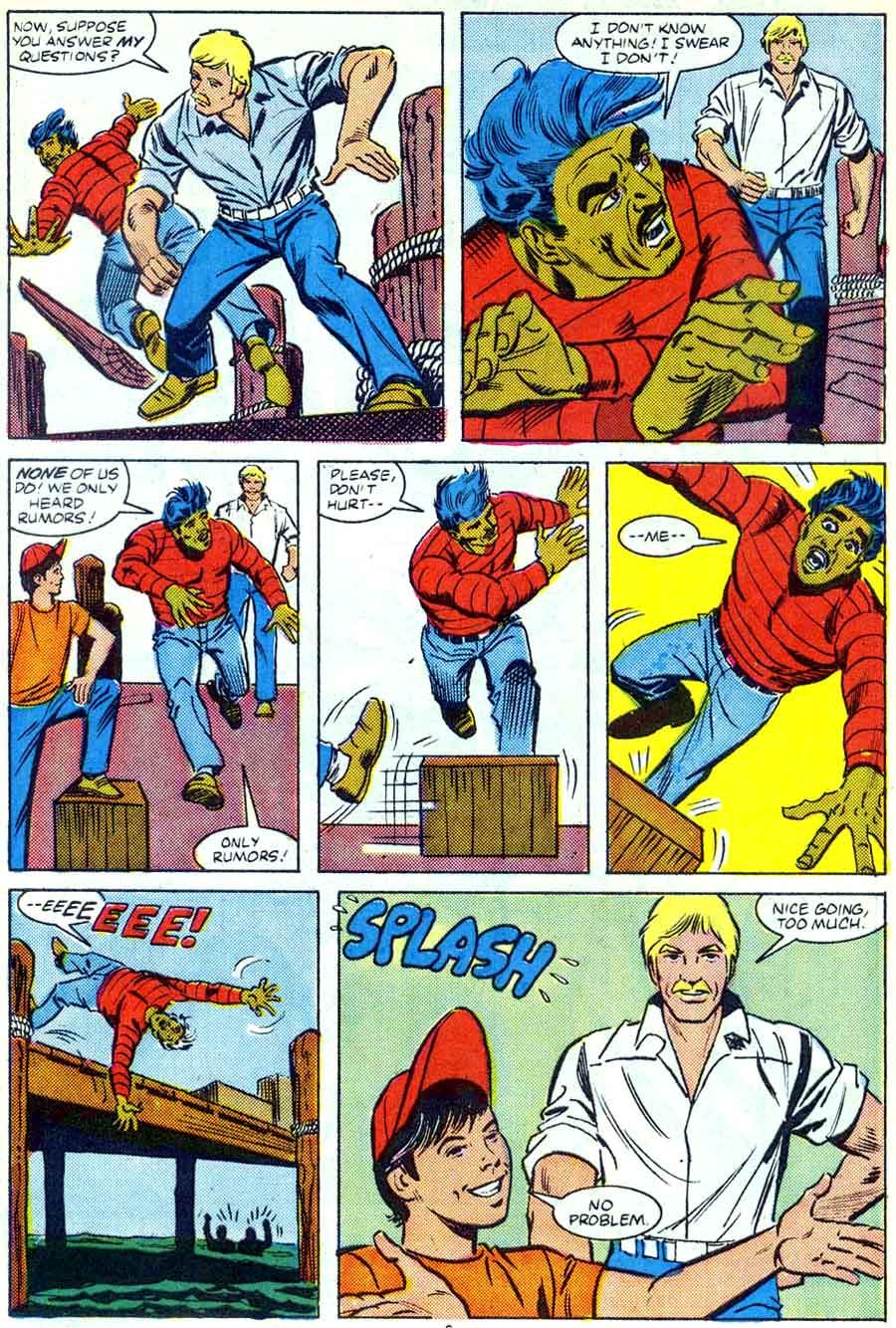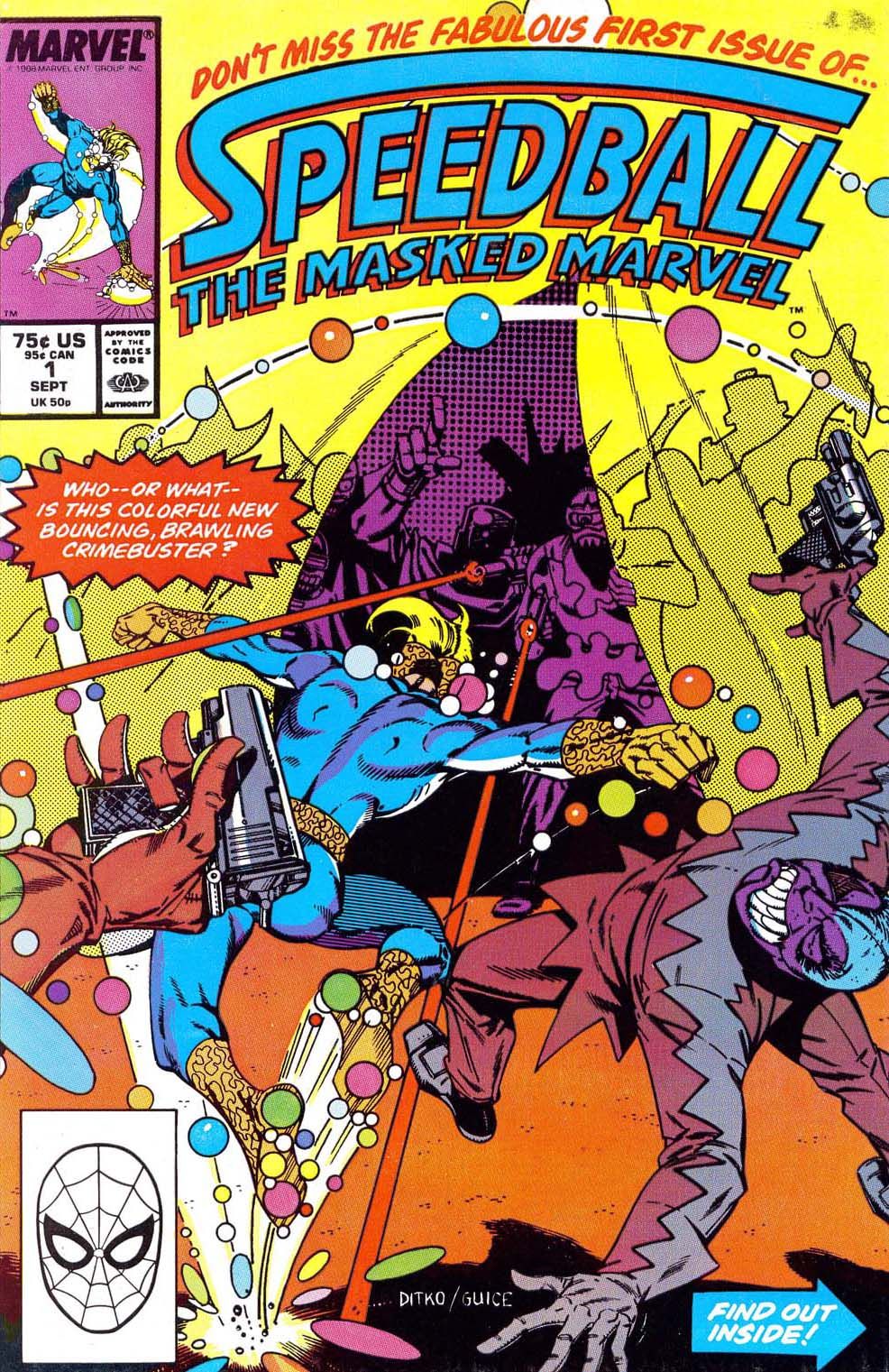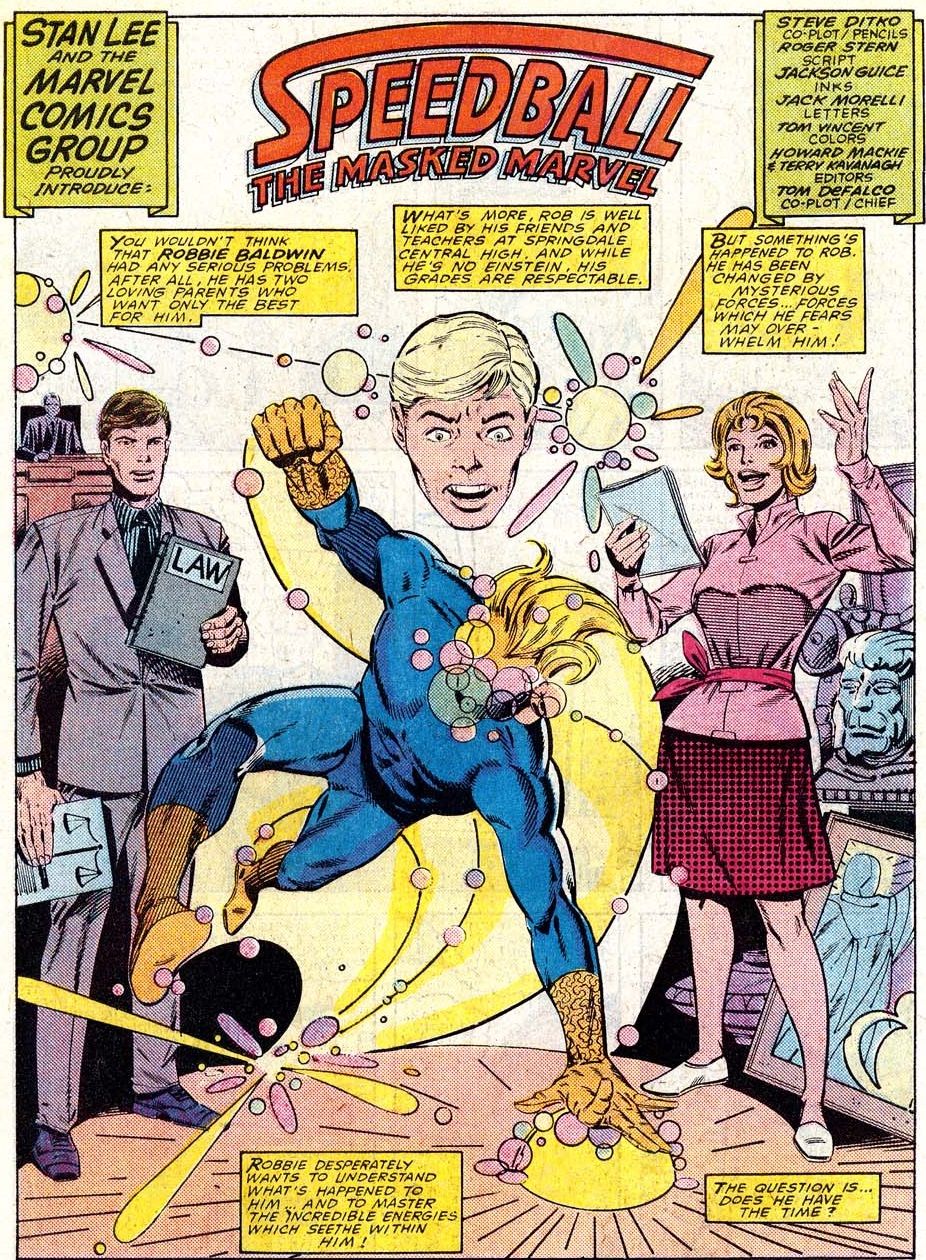As we've mentioned in the previous looks at Steve Ditko's comic book career, the one company that he remained the most involved with throughout his career was actually Charlton Comics, working there off and on from 1953 through Charlton going out of business in 1986. However, he is clearly most famous for his work for Marvel Comics in the 1960s. Honestly, it is kind of strange to consider that this man's five decades plus in the industry is really boiled down to a five year period from 1961-1966. But hey, people still think of Bob Dylan for what happened between 1963-1966, so that's just what happens when you make such a major impact on pop culture history.
In any event, after years away from Marvel, Ditko made a return to Marvel in 1979 and, outside of a short break in the early 1980s, worked steadily there until the end of the 1980s. However, the titles that Ditko worked on now were much less high profile, due both to his reduced stature as a "hot" artist but also Ditko's own restrictions of what kind of books that he was willing to work on.
RELATED: How Steve Ditko Defined Spider-Man for a Generation
In the late 1970s, Jim Shooter became Archie Goodwin's second-in-command when Goodwin became the Editor-in-Chief of Marvel Comics. During this period, Shooter first met Steve Ditko at some New York City comic book based situation. Shooter recalls it as being some sort of Continuity event (Neal Adams' company that produced artwork for a variety of clients). Shooter then took over from Goodwin as Marvel's Editor-in-Chief in 1978. He used this time to approach Ditko about a return to Marvel. Shooter later recalled on his blog:
After I became Editor in Chief of Marvel in 1978 and therefore had the power to offer him work, I told Steve that if he ever wished to work for Marvel he was welcome. Anytime. He was a Founding Father. I couldn’t rectify all the past injustices (though I was trying), but I could and would keep our door always open to him.
Steve apparently wasn’t too keen on having anything to do with Marvel early on, but a few years later, he came to see me at Marvel’s 387 Park Avenue South offices. I think he realized that we had made a sincere effort to make things better and deal more fairly with creators. Or maybe the fact that Stan wasn’t there any more (having moved out to the Coast to work at Marvel Productions) made a difference. Or maybe he just wanted work. Whatever. He was willing to work for us and I was happy.
It it possible that Shooter is thinking about Ditko's later return to Marvel around 1984. However, since Ditko's return to Marvel did line up pretty well with Shooter becoming the Editor-in-Chief, I'm willing to say that Shooter played a role in Ditko's original return to Marvel in 1979, although Marv Wolfman clearly played a major role, as well.
It all started with a surprise cover by Steve Ditko on Incredible Hulk #235!
Page 2: [valnet-url-page page=2 paginated=0 text='Machine%20Men%20Have%20No%20Flaws!']
One of the things that Jim Shooter wanted to get rid of at Marvel was the deal where some writers were also the editors on their comics. Shooter's point was a clear one (there should be some sort of checks and balance system), but at the same time, we were really just talking about Marvel's two biggest writers, Marv Wolfman and Roy Thomas, so it didn't seem too out of the ordinary to expect that there would be exceptions for those two guys, especially considering they had both been Editors-in-Chief of Marvel in the past (and Thomas had been editing his own books for over a decade at this point). However, Shooter did not think that it made sense to give them exceptions and so both Wolfman and Thomas left for DC Comics.
Before Wolfman left, though, he helped bring Ditko back to Marvel by adding him as the artist on a revival of Machine Man. Machine Man was a title that launched out of Jack Kirby's adaptation of 2001: A Space Odyssey. Marvel learned early into their ongoing series based on that film that they no longer had the rights to the movie, so Kirby just took a robot character he had invented for that book, X-51, and gave him his own ongoing series written and drawn by Kirby, titled Machine Man. It last just nine issues. After nearly a year-long hiatus, the book came back with Wolfman and Ditko on the book. They used a guest appearance of Machine Man in Incredible Hulk #235 to lead into the new series. The Hulk issue had a surprise cover by Steve Ditko! That was his first Marvel comic book cover in over a decade, so it must have been quite a shock for the comic book fans of 1979!
RELATED: Ditko's Doctor Strange Was Psychedelic Before Psychedelic Was a Thing
You see, one of Ditko's restrictions upon his return to Marvel was that, naturally, he was not going to work on either Doctor Strange or Spider-Man, but also that he did not want to work on "flawed" superheroes.
So Wolfman had Machine Man get a revamp, so that he is now without flaws!
The issue, Machine Man #10, also saw Machine Man get revamped in other ways...
The letter column for the issue touted the return of Ditko to Marvel...
As noted, Wolfman left Marvel soon after, so Tom DeFalco took over as the writer for the bi-monthly series.
DeFalco told Wizard Magazine years ago about a strange encounter he had with Ditko as soon as DeFalco took over the book:
Tom DeFalco’s first contact with Ditko came as a shock, catching the writer totally off guard. As a freelancer, DeFalco made a point of putting his phone number on all his plots. He’d just been assigned to Machine Man, and his editor informed him that Ditko, who “had his own ideas of what a hero is and what a book should be,” would look over the plot and decide whether he wanted to stay on the title.
“One afternoon, I got a call from Steve,” DeFalco recalled. “He’d read the plot and figured he’d have a discussion with me. I was totally intimidated. This was a living legend.
“I still remember the first thing he said to me after he introduced himself: ‘What is a hero, and what gives you the right to write stories about heroes?'”
Thus, the conversation began. DeFalco fumbled a few answers, and the two started to debate all sorts of profound questions about heroes. It was a real philosophical discussion, the kind DeFalco admits he hadn’t had since leaving college. The two ended up trading opinions for more than an hour-and-a-half.
“I started out this meek, terrified guy and at one point, I realized we had gotten really passionately involved, and were shouting at each other over the phone,” DeFalco said.
Hanging up the phone, the writer felt totally wrung out, disbelieving he’d just spent the better part of two hours arguing with the man who co-created Spider-Man, certain the artist would opt off Machine Man.
“I decided then and there I’d never put my phone number on a plot again,” DeFalco chuckled.
To the writer’s surprise, Ditko stayed on the title, and saw the book through to its end. Over the years, the duo continued to have what DeFalco categorizes as “wild discussions,” sometimes having absolutely nothing to do with comic books.
“I found him a very intelligent, well-spoken, terrific guy with a lot of ideas,” he said. “Some of them I thought were crazy, others made a lot of sense.”
Interestingly, the final issue of the series, Machine Man #19, introduced a new villain who seemed like he was right out of Ditko'e early years on Amazing Spider-Man and, sure enough, Jack O'Lantern became a regular Spider-Man foe (even taking over as Hobgoblin for a number of years)...
While he was working on Machine Man, Ditko also worked for the try-out series, Marvel Spotlight, including being the first regular artist on a new character that Bill Mantlo had introduced in his early run on Micronauts.
Page 3: [valnet-url-page page=3 paginated=0 text='Ditko%20Has%20the%20Uni-Power!']
Mantlo had introduced Captain Universe early in his Micronauts run, as a special cosmic power that possessed a former astronaut. However, in the spotlight feature given the character in Marvel Spotlight #9-11, Mantlo and Ditko established that the Uni-Power would transfer to different people. That would be the hook for the character. Each issue would have a new host become Captain Universe!
RELATED: When Charlton Comics Hit the Bullseye With Steve Ditko
In the second issue, a pair of adult twins get the power...
In the third (and final) issue, a cat burglar gets the power...
The feature was obviously intended to hopefully become a series, but it did not happen.
Ditko's work at Marvel then dried up a bit for the next couple of years, so he did more work for Charlton as well as some work for the newly created independent comic book company, Pacific Comics.
This, then, is probably around the time that Shooter mentioned that Ditko specifically came to him looking for work.
Shooter recalled on his blog, "When Steve Ditko came around looking for work, I made it a priority to find him something—after all, he was a founding father, and though I couldn’t set right all the injustices of the past, I could make sure he had work if he wanted it. ROM seemed like a natural. Sal had plenty to do, so no worries there. The reason ROM was right for Steve is that Steve refused to work on “flawed” heroes! No feet of clay permitted. His philosophy was (and probably still is) that heroes should be noble. Period. I asked him about Spider-Man, some of whose flaws were Steve’s ideas. He explained that when he drew Spider-Man, Spider-Man was still a kid, still learning, and therefore, allowed some foibles. Fine, then. ROM, the noble Knight it was. Steve did some good work on ROM."
On another post, he noted, "But if we hadn’t had ROM, we would have created a character for Steve that suited him. As long as I was EIC, there was a place for him at Marvel, even if we had to make one up special."
Rom the Spaceknight was based on an action figure that Parker Brothers had come up with that quickly went the way of the dodo bird, but the Marvel series (written by Bill Mantlo, the same guy who turned a similar toy property, Micronauts, into a hot book for Marvel) kept going for years, with Sal Buscema the original main artist. Ditko drew the final 16 issues of the series, including one momentous storyline where Ditko got to draw nearly the entire Marvel Universe!
Page 4: [valnet-url-page page=4 paginated=0 text='Ditko%20Draws%20the%20Marvel%20Universe!']
The concept of Rom was that he was a spaceknight who was here on Earth fighting against the evil, shape-shifting Dire Wraiths. In Rom #66 (Ditko inked by P. Craig Russell), Rom is seemingly about to lose his life to the Dire Wraiths when the combined might of the superheroes of Earth show up to save the day. We then get to see Ditko draw pretty much every (non-Spider-Man and non-Doctor Strange) superhero of the Marvel Universe of the mid-1980s, including Wolverine!
RELATED: Shades of a Changing Man: Steve Ditko at DC Comics
During his time on Rom, Ditko was also drawing a bunch of issues of the bi-monthly Indiana Jones licensed series (apparently Indiana Jones is not a flawed hero). Here is is inked by Danny Bulanadi (they were announced as the new creative team along with writer Linda Grant, but the series ended soon afterwards)...
Ditko did a few annuals and some fill-in issues. His strict "no flawed heroes" approach worked well with licensed heroes, so he did a Chuck Norris comic book...
Then he worked with Tom DeFalco on a character that was initially developed for the New Universe before the concept of the New Universe changed to "the world outside your window...just suddenly with superpowers added to the mix". The character, Speedball, got his own series in 1988. By this time, Shooter was out and Tom DeFalco was now the Editor-in-Chief, so Roger Stern worked on the series with Ditko, instead. In a return to his classic years, Ditko was once again working on the plotting of the series with Stern. Since Speedball was young, Ditko tended to be okay with guys like that still being flippant and carrying flaws. Sort of like Spider-Man back in the day. Butch Guice was the inker.
The series only lasted 10 issues, and as the 1980s came to a close, this was the final ongoing mainstream comic book series that Ditko would ever be the regular artist on, marking a major milestone in his career.
The 1990s would be a turbulent time for Ditko, leading to his eventual retirement from mainstream comics in 1998. That's a story for another time, though.

